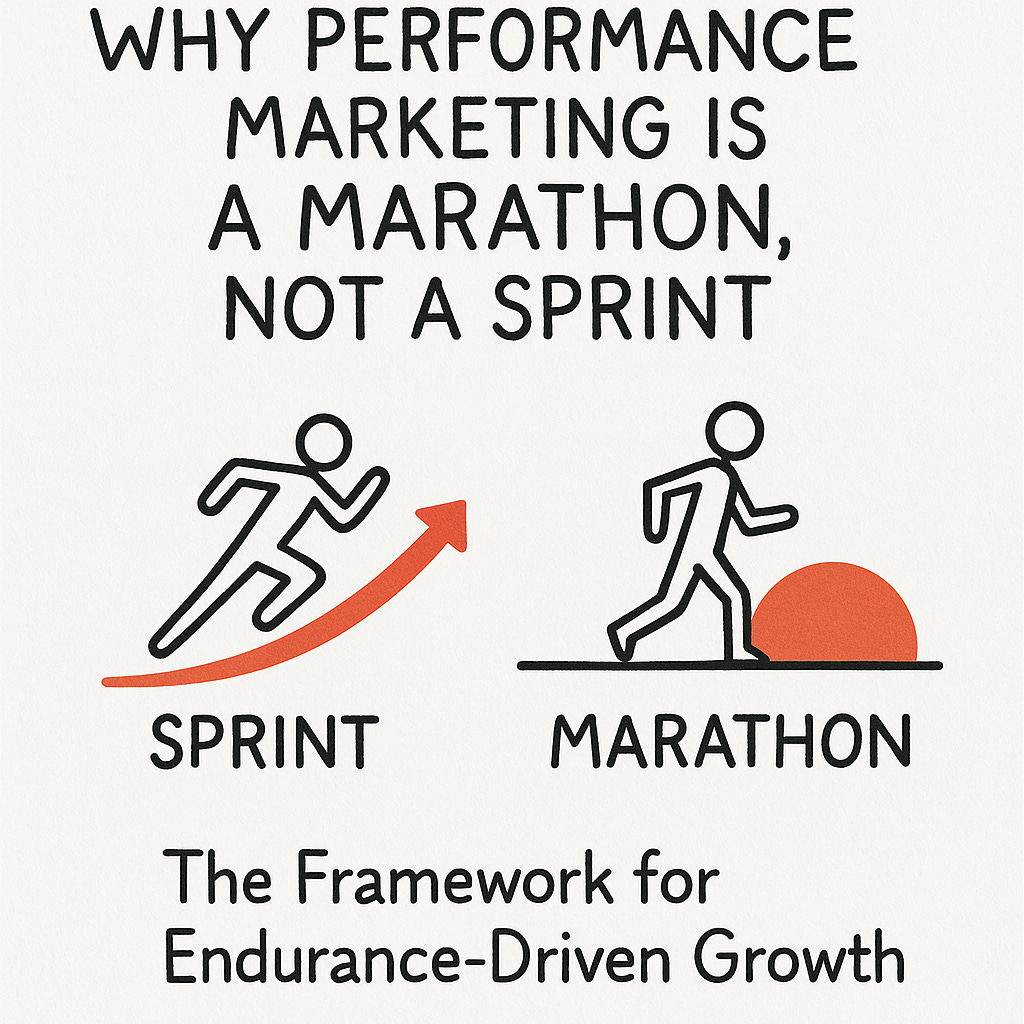Why Performance Marketing Is a Marathon, Not a Sprint: The Framework for Endurance-Driven Growth
Discover why the best marketers pace like marathoners, using the 60/40 rule, budget periodisation, and recovery cycles to outlast short-term sprinters.
I’ll admit it: running has never been my thing. Back in my student days on exchange in Minnesota, I loved the long, freezing runs that cleared my head. But once I returned to the relentless Singapore heat, the habit vanished. Recently, though, after an intense debate with my BCG Rise teammates about our Capstone project, I laced up again. Not for cardio, but for clarity.
Somewhere between the rhythm of my breath and the pounding of my shoes, a thought crystallised: performance marketing isn’t a sprint. It’s a marathon.
This sounds obvious until you realise how most marketers actually behave. We obsess over sprint metrics such as quick conversions, instant ROAS, and the dopamine of a campaign that “works.” But endurance is where the real growth lives. The best marketers pace themselves. They think in compounding curves, not quarterly sugar highs.
Because the truth is, endurance doesn’t just win races. It builds empires.
1. The Pacing Paradox
The Sprint Trap
Most performance marketers behave like sprinters who accidentally entered a marathon. They explode out of the blocks by front-loading budgets, chasing quick conversions, and obsessing over ROAS in week one. It feels productive, but the crash is inevitable. Research shows brands that prioritise only short-term performance marketing hit a wall around the 18-month mark, eerily similar to a runner bonking at mile 20.
The Marathon Mindset
Elite marathoners like Kelvin Kiptum don’t torch their fastest split in the first 5K. They save it for the last stretch, when everyone else is fading. That’s the blueprint for marketers who win the long game. They adopt negative splits, pacing early investments in brand while finishing strong in performance.
This is where the 60/40 Rule comes in: roughly 60% in brand building, 40% in sales activation. Not a matter of patience, but of physics. You can’t sprint for 26.2 miles, and you can’t sustain growth on acquisition alone.
2. Budget Allocation as Training Periodisation
The Training Cycle Philosophy
Marathoners don’t train at race pace year-round. They train periodically. Starting with base building, to hill work and tapering. The smartest marketers treat budget allocation the same way:
Base Phase (Months 1–4): Heavy brand investment and content creation. Like aerobic base training, slow but essential.
Build Phase (Months 5–8): Tactical campaigns, measured tests, and optimisations. Think of your VO₂ max training.
Peak Phase (Months 9–11): High-intensity performance pushes, fuelled by the brand equity already built.
Recovery Phase (Month 12): Full analysis, iteration, and planning. The marketing equivalent of taper and reset.
3. Recovery and Iteration Cycles
The Recovery Imperative
Here’s the dirty secret: you can’t really overtrain, you can only under-recover. (Read it again.)
Elite marathoner Hellen Obiri naps twice daily to prime her system. High-performing marketing teams should treat recovery the same way.
Week 1 Post-Campaign: Full analysis and documentation. This is active recovery.
Week 2: Light re-engagement. Think content creation and audience research.
Week 3: Gradual build-back. Returning with small experiments and controlled iterations.
The Iteration Advantage
Marathon training isn’t repetition, it’s intelligent variation. Performance marketing thrives on the same principle: test, measure, adjust, repeat. The art is knowing when to push and when to step back.
Growth comes not from sprinting harder, but from compounding smarter.
Final Thoughts: The Long Game Wins
The counterintuitive truth about performance marketing mirrors the counterintuitive truth about marathon running: the fastest way to get there is often to slow down first.
While competitors torch their budgets in a 100-meter frenzy, you’ll be the one quietly building the aerobic base that carries you past mile 20 when the sprinters hit the wall.
Elite marathoners train for years to cover 26.2 miles in under three hours. The best marketers think in the same cadence: not days or weeks, but quarters and years. Endurance, not adrenaline, wins the race.
So your next move is simple:
Build your base.
Pace your budgets.
Plan your recovery.
Because in marathons and in performance marketing, it’s not who starts the fastest that wins. It’s who’s still running strong when everyone else has stopped.

